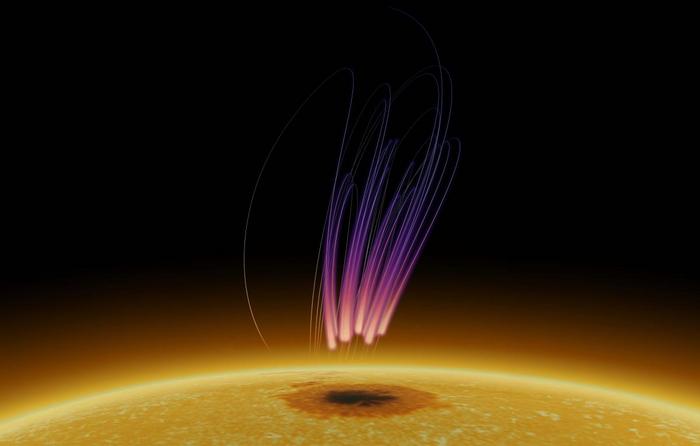A recent study in the Nature Astronomy journal, astronomers at New Jersey Institute of Technology’s Center for Solar-Terrestrial Research (NJIT-CSTR) examined radio reports of an incredible aurora-like bit over 40,000 km above a calm, chilled spot on the Sun, or sunspot.
The researchers claim this new radio emission carries traits similar to auroral radio emissions often seen around planets such as Earth, Jupiter and Saturn, and also around some low-mass stars.
Led by NJIT-CSTR scientist Sijie Yu, the report tells us that their find opens up fascinating possibilities in comprehending powerful solar radio bursts and possibly understanding similar happenings in larger starspots on distant stars.
The well-known northern lights (Aurora Borealis) and southern lights (Aurora Australis), lovely light displays visible in our planet’s poles, occur when solar behaviors unsettle Earth’s magnetosphere. This results to charged particles raining down into Earth’s magnetic poles that then mingle with oxygen and nitrogen atoms in the high atmosphere. These zooming electrons make intense radio waves at frequencies near several hundreds of kHz.
The newly noticed solar radio signals detected across a sizable sunspot originating from unusually strong magnetic fields on the Sun’s surface are said to be different to earlier known solar radio interference — both in terms of spectrum and time by Yu’s group.
Even though these unique solar radio emissions are somewhat weaker, they bear similarity to stellar auroral signals seen before and might hint that star spots on colder stars like Sunspots could be behind certain radio blasts noted in various stellar settings.
The team of scientist believe that this occurrence is some of the most concrete evidence yet of radio ECM emissions from our Sun. The features resemble those observed on our planets and far-off stars, hugely suggesting that such a model might be relevant to other stars with starspots.
When we better understand these signals originating from our Sun, we’re more capable of interpreting robust waves coming from M-dwarfs, the universe’s most widespread type of star. These could even disclose key connections in astronomy events.
To attain this meaningful breakthrough, the research group — comprised of Marina Battaglia from FHNW and Tim Bastian from the National Radio Astronomy Observatory — used wide-ranging dynamic radio imaging spectroscopy observations from the famed Karl G. Jansky Very Large Array.
